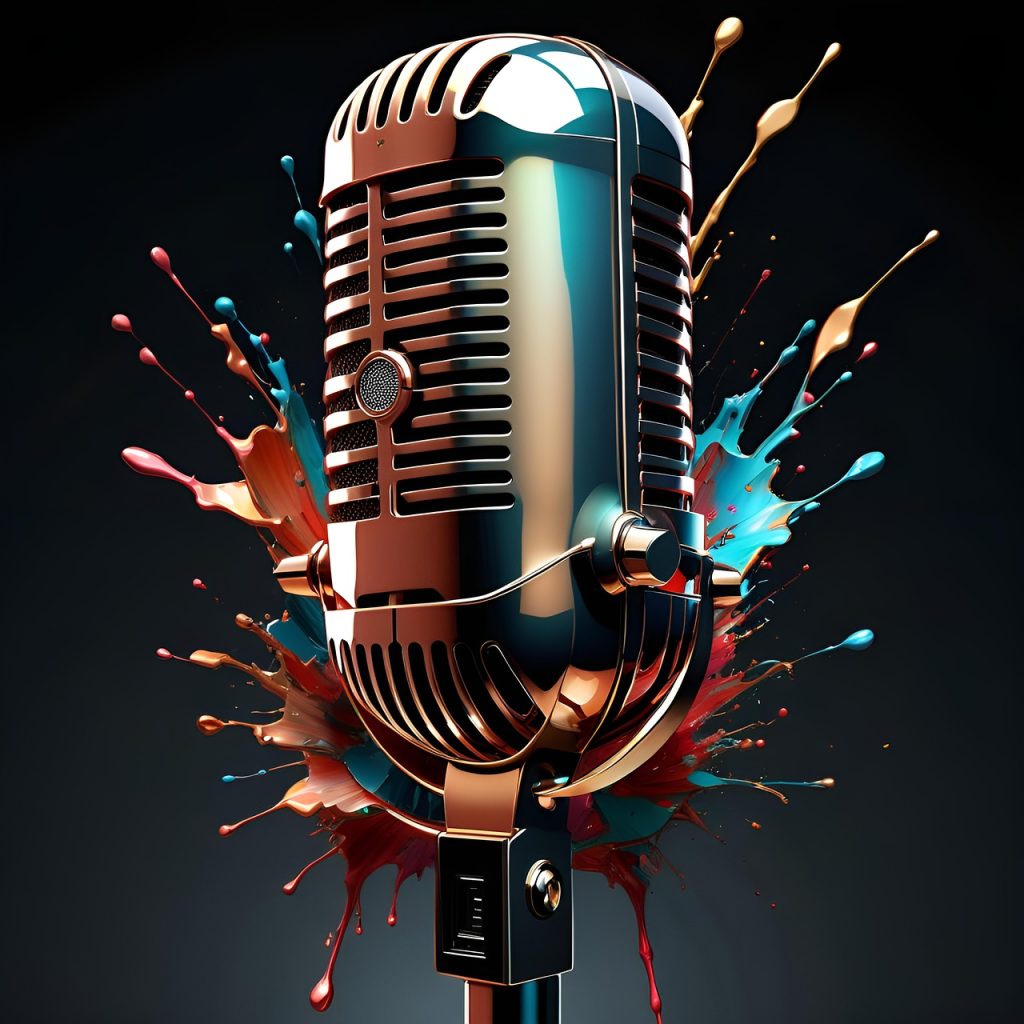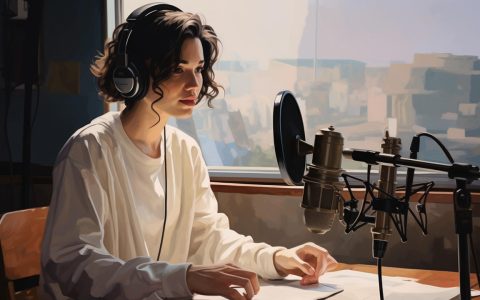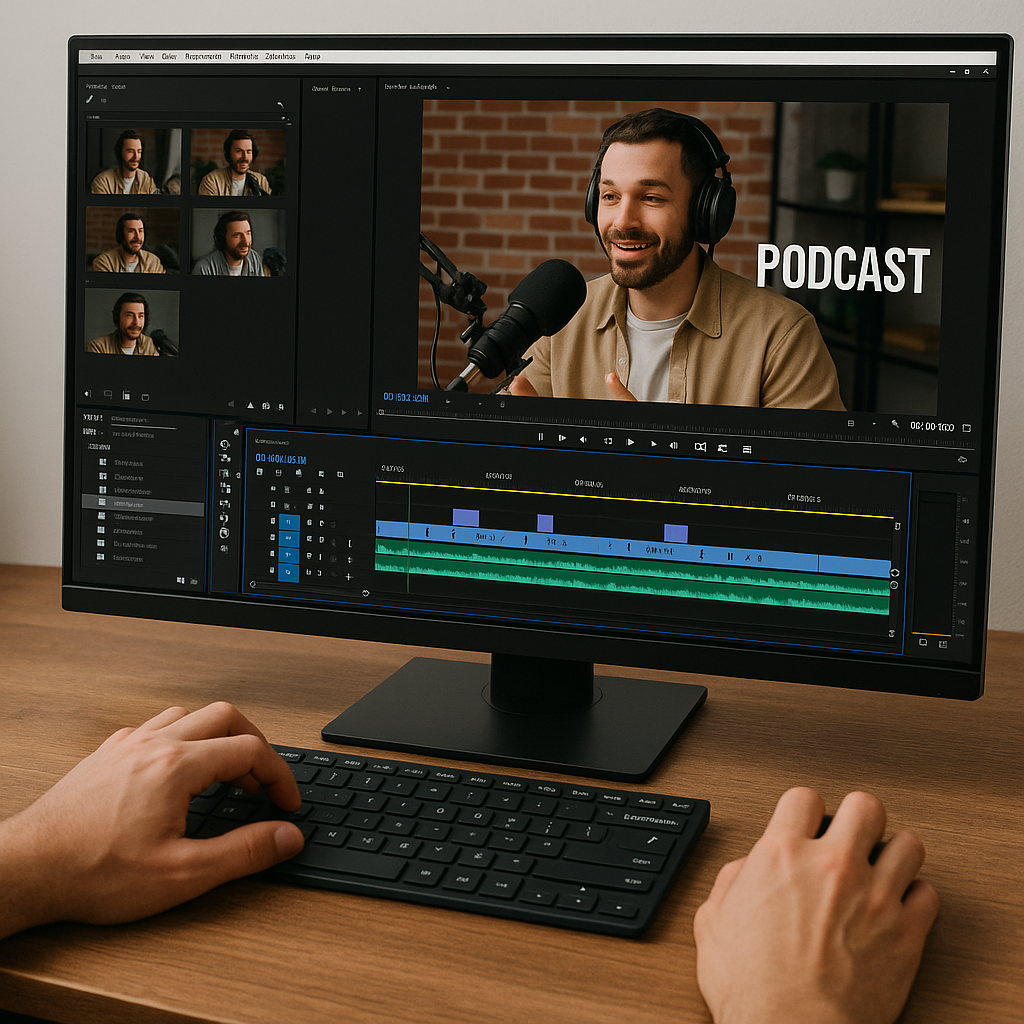
Let's Talk Podcasting
You have decided you are going to use your voice to cover important topics for everyone to hear. Did you know that podcasting is so effective at advertising that it is currently growing faster (at 72% YoY) than the overall internet advertising market (which grew 35% YoY), according to IAB. A Statista survey shows that 55% of the US Population consumed a podcast in April of 2025.
Podcasts have many benefits. They quickly build brand awareness and trust with listeners. Proof of listener engagement is shown in large percentages of products or services being purchased after they have been discussed or showcased. Podcasting is also a great way for your marketing team to seamlessly push to other social media platforms for maximum exposure.
To get started with podcasting you need a few physical things like a space and equipment, some editing skills, and a plan on what format works best for you.
Your Physical Space
When selecting a physical space for podcasting, it is important to consider factors such as sound quality, ambient noise levels, room acoustics, size, and accessibility. A quiet, enclosed area with minimal echo and background noise—such as a carpeted room with soft furnishings or acoustic treatments—helps ensure clear, professional audio without distractions. The space should also accommodate any necessary equipment, including microphones, mixers, lighting, and seating for guests. Choosing the right environment is crucial because poor audio quality can deter listeners, reduce credibility, and negatively impact audience engagement. A well-selected space supports consistency, clarity, and the overall production value of your podcast.
Your Lighting
When selecting lighting for podcasting, especially if video is involved, it’s important to consider brightness, color temperature, placement, and consistency. Soft, diffused lighting helps reduce harsh shadows and creates a flattering, professional appearance, while consistent color temperature (typically between 5000K–5600K for a natural daylight look) ensures a clean, cohesive visual. Positioning lights at eye level or at a 45-degree angle helps illuminate faces evenly and avoids glare or overexposure. Proper lighting is important because it enhances visual quality, maintains audience attention, and reinforces the professionalism of your podcast. Poor lighting can make even great content appear amateurish and distract from your message.
Your Setting Décor
When selecting your setting decor for podcasting, consider elements that reflect your brand, resonate with your target audience, and enhance the overall visual appeal without causing distractions. Choose colors, backdrops, and props that align with your podcast’s theme and tone—whether it’s professional, creative, relaxed, or high-energy. Keep the background clean and uncluttered but thoughtfully styled to add character and interest. The right decor is important because it helps establish your podcast’s identity, makes a strong visual impression, and creates a more immersive and consistent experience for viewers. A well-designed setting also communicates credibility and professionalism, encouraging audience trust and engagement.
Your Technical Equipment
When selecting technical equipment for podcasting, it’s essential to consider your recording needs, budget, and the quality of content you aim to produce. Key components include a high-quality microphone for clear audio capture, headphones for accurate sound monitoring, an audio interface or mixer to manage sound levels, and reliable recording software. For video podcasts, a good camera and lighting setup are also crucial. Prioritizing equipment that offers durability, ease of use, and compatibility with your editing tools can streamline production and reduce technical issues. Investing in the right gear is important because it directly affects sound and video quality, which are critical to maintaining audience attention, building credibility, and delivering a professional podcasting experience.
What Is Your Podcast Duration & Frequency
When selecting the duration and frequency of your podcast episodes, consider your content depth, audience preferences, and your production capacity. Shorter episodes (10–20 minutes) may suit fast-paced, informative formats, while longer episodes (30–60+ minutes) allow for deeper conversations or storytelling. Frequency—whether daily, weekly, biweekly, or monthly—should match what you can consistently sustain without compromising quality. Consistency builds audience trust and helps with audience retention and growth. Choosing the right duration and schedule is important because it sets listener expectations, supports content planning, and ensures long-term sustainability, all of which contribute to your podcast’s success and credibility.

What Is Your Format
When selecting your podcast format, consider your content goals, audience expectations, and personal strengths as a host. Common formats include solo commentary, interviews, co-hosted discussions, narrative storytelling, or panel conversations. Each format offers different advantages—interviews bring in diverse perspectives, while solo episodes allow for more personal control and direct audience connection. It’s also important to consider how the format aligns with your subject matter and whether it allows for consistent, engaging content. Choosing the right format is important because it shapes the listener experience, impacts how you prepare and produce episodes, and plays a key role in building a recognizable and reliable podcast identity that keeps your audience coming back.
Are You Going To Edit Your Own Audio
Editing your own podcast can be challenging due to the time commitment, technical skills required, and the difficulty of maintaining objectivity when reviewing your own voice and content. Audio editing involves more than cutting out pauses or mistakes—it requires balancing sound levels, reducing background noise, adding music or effects, and ensuring a smooth, engaging flow. Without professional expertise, the final product may sound inconsistent or unpolished, which can affect listener retention and credibility. Outsourcing to professionals is important because it ensures high-quality production, saves valuable time, and allows you to focus on content creation and audience engagement. Professional editors bring experience, efficiency, and a trained ear that can elevate your podcast and help it stand out in a competitive market.
Are You Going To Record Video
Video recording your podcast offers significant benefits by increasing engagement, expanding reach, and enhancing your brand’s visual identity. With video, audiences can connect more deeply through facial expressions, body language, and the overall energy of in-person interactions—creating a more immersive experience. It also opens the door to wider distribution on platforms like YouTube, TikTok, and Instagram, where visual content performs strongly and attracts new viewers. Video adds value by allowing for repurposing into short clips, promotional content, or reels, extending the life of each episode. It is important because it elevates your podcast’s professionalism, increases discoverability, and strengthens audience connection in a visually driven digital landscape.

Are You Going To Edit Your Own Videos
Editing your own video for podcasting presents several challenges, including mastering complex software, ensuring visual consistency, syncing audio and video accurately, and adding engaging visual elements like transitions, graphics, or captions. It’s a time-consuming process that requires both technical proficiency and a creative eye to produce content that looks polished and professional. Without proper editing, video podcasts can appear amateurish, with distracting cuts, poor lighting corrections, or inconsistent framing. Outsourcing to professionals is important because they have the tools, experience, and artistic skill to enhance visual appeal, maintain brand consistency, and deliver a final product that keeps viewers engaged. High-quality video editing can significantly boost your podcast's credibility, reach, and viewer retention.
Are You Going To Include Video Subtitles And Transcripts
Including subtitles in video podcasting can be challenging due to the precision and time required for accurate transcription, syncing, and formatting. Manually adding subtitles demands careful attention to timing, grammar, and speaker identification, especially in multi-speaker episodes or those with technical language or fast-paced dialogue. Mistakes or poor-quality subtitles can confuse viewers, reduce accessibility, and reflect poorly on your brand. Outsourcing to professionals is important because they use advanced tools and have the expertise to ensure subtitles are accurate, well-timed, and styled to match your brand. High-quality subtitles enhance viewer comprehension, accessibility for hearing-impaired audiences, and engagement across diverse platforms—especially where sound may be off by default, like on social media.
So What Is Next?
If you are feeling overwhelmed by all the specifics-rest assured Desired Effect has you covered. We can set-up equipment, to technical editing and return it back to you to post and release it. All you have to do, is follow your passion and present for your listeners and viewers. Today we are finding more corporate companies are podcasting on topics of interest to generate business. What is even better it is working remarkably well for them. There are law firms, banking and lending firms, specialty medical groups, nutrition specialists, sports teams, and so many more…. all podcasting.
